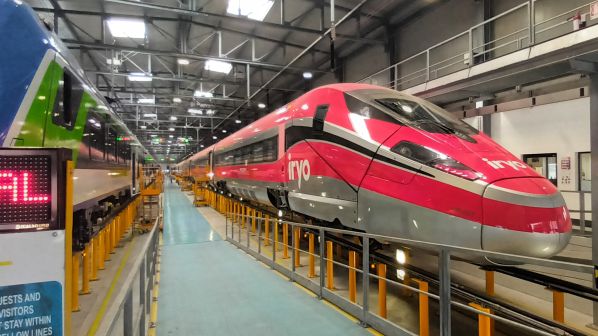ITALY’s national operator Trenitalia is exploring how to develop its high-speed rail business around its flagship Frecciarossa train fleet. Traffic is growing strongly in each of the three markets it serves: Italy, France and most recently Spain through its Iryo joint venture. Trenitalia is also studying new markets.
In 2025, Hitachi Rail Italy will complete the final six of 84 Frecciarossa/ETR 1000 trains, the bulk of which are in operation on the Italian high-speed rail network, where Hitachi says Trenitalia has seen growth of 517% during the last 10 years with traffic rising from 6.5 million journeys per year to around 40 million. Rail now accounts for 75% of journeys between Rome and Milan.
Growth has been achieved through the steady expansion of the high-speed network, the high frequency and quality of the service provided with four classes of accommodation, spurred on by the successful introduction of competition in Italy from private operator Italo-NTV.
Trenitalia introduced Frecciarossa on the Milan - Turin - Lyon - Paris route in December 2021 operating five trains in direct competition with French National Railways (SNCF). Traffic grew by 57% during the first nine months. As a result, Trenitalia has asked Hitachi to install French signalling equipment on four trains currently operating in Italy. The first three trains will enter service on the Milan - Paris route early in 2024, with the fourth train following by the end of 2024.
Iryo launched its first services on the Madrid - Barcelona route on November 25 2022 followed by Madrid - Seville/Málaga on March 31 and Madrid - Alicante on June 2. Iryo hopes to attract 8 million passengers a year by 2025 using its fleet of 20 Frecciarossa trains, delivery of which is nearly complete.
Trenitalia is now looking to introduce Frecciarossa on the Milan - Munich route in 2026 for which it would need around seven trains.
In addition to the need to meet growing demand in Italy, Trenitalia is considering when to replace its original fleet of 58 ETR 500 high-speed trains, which are nearing the end of their working life and are increasingly expensive to maintain.

